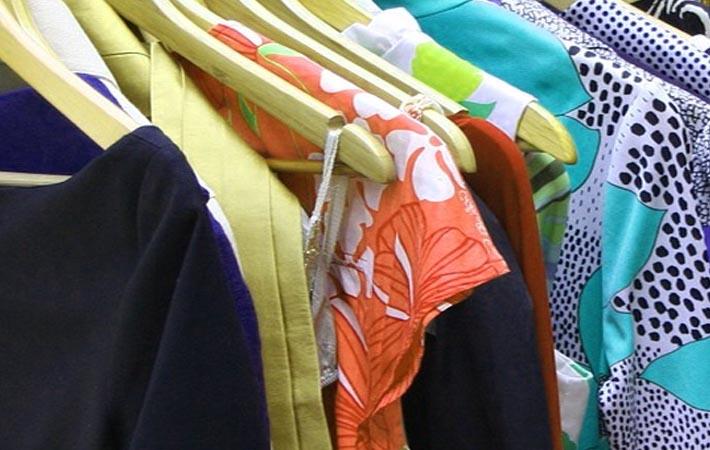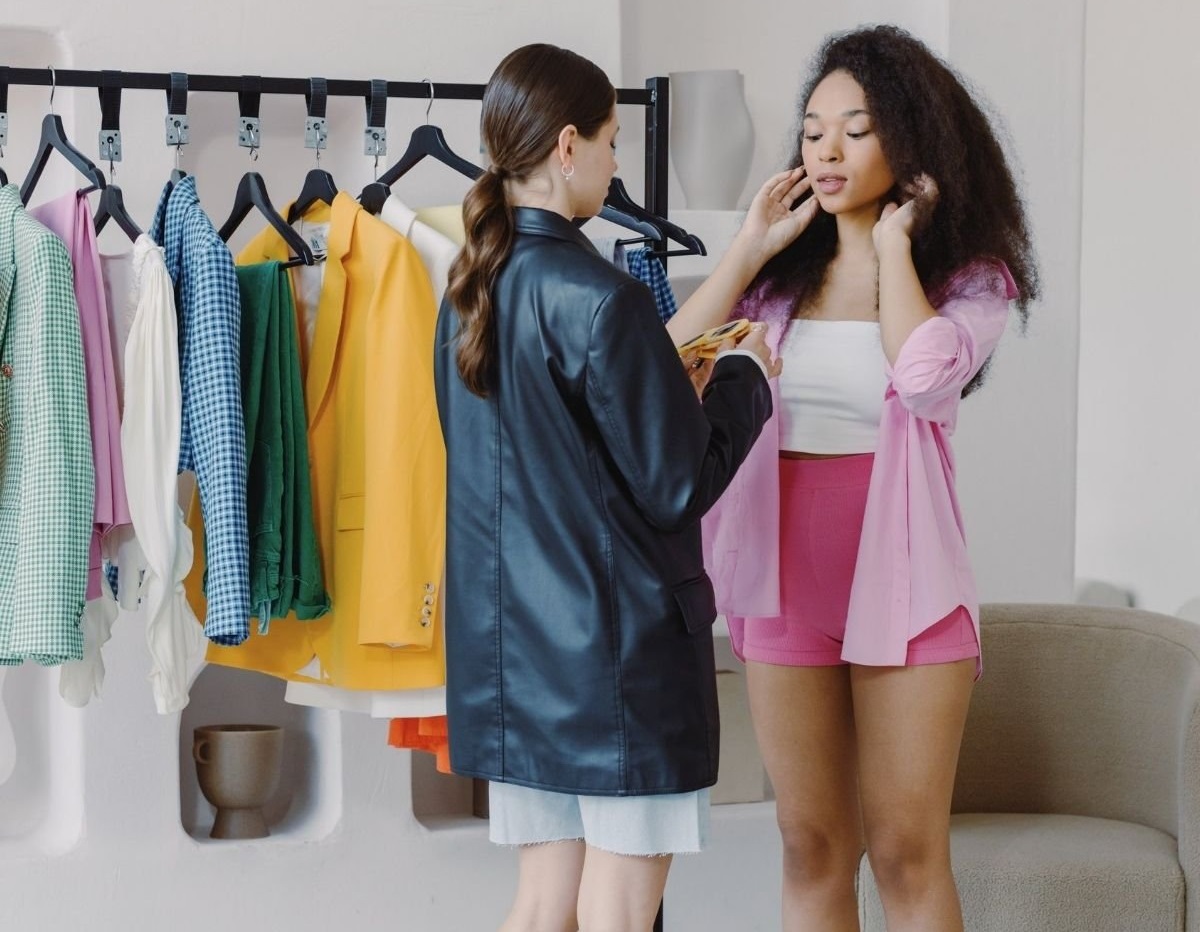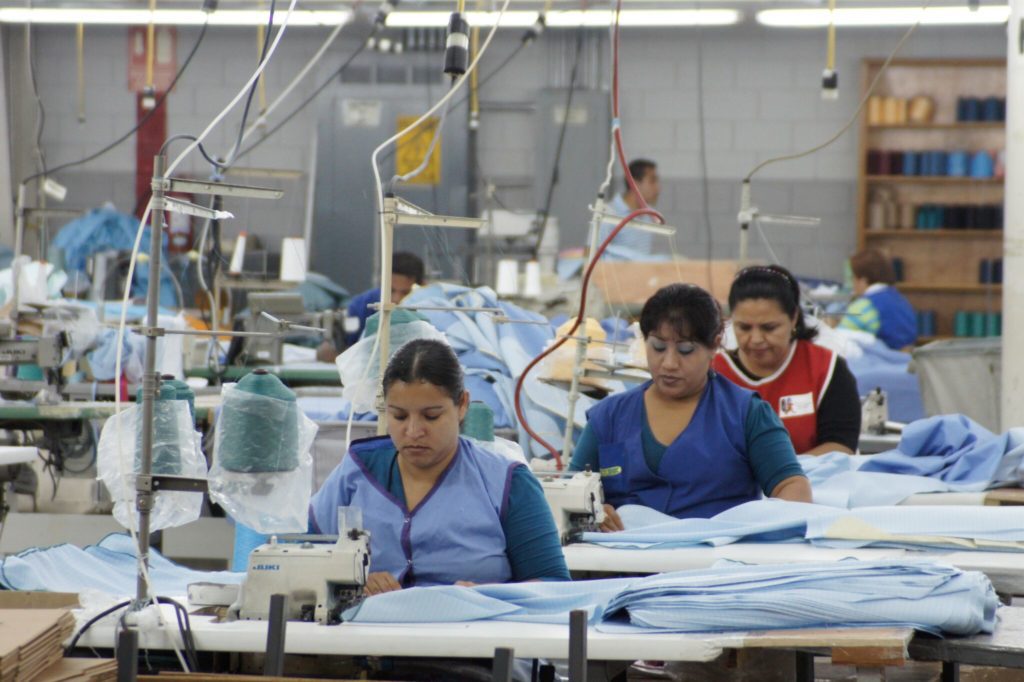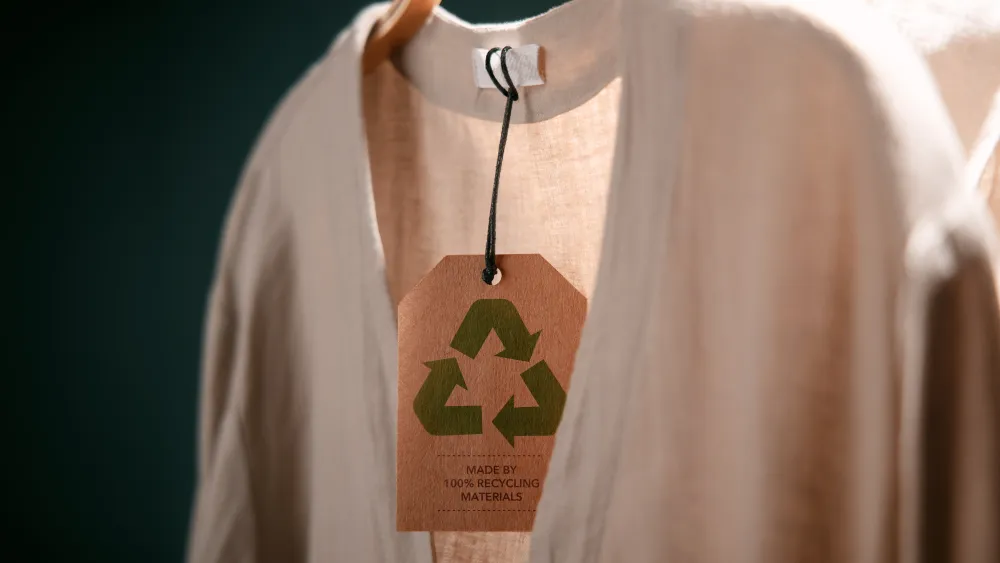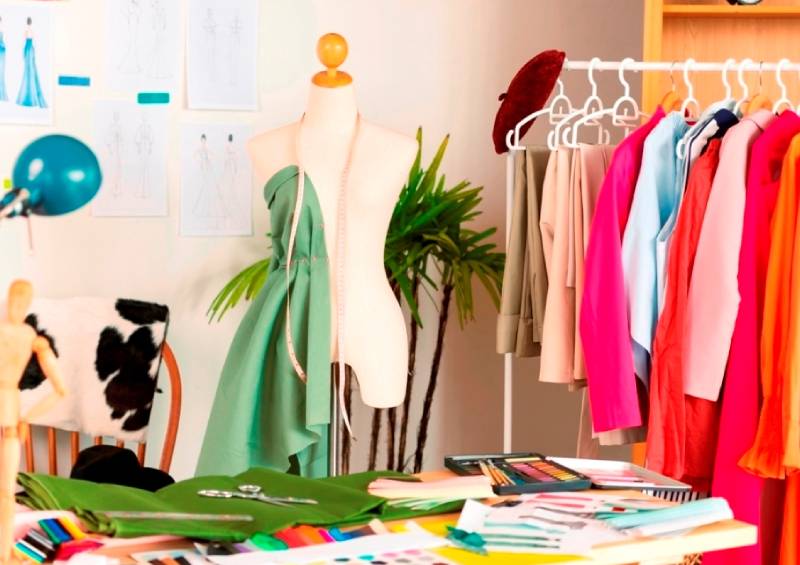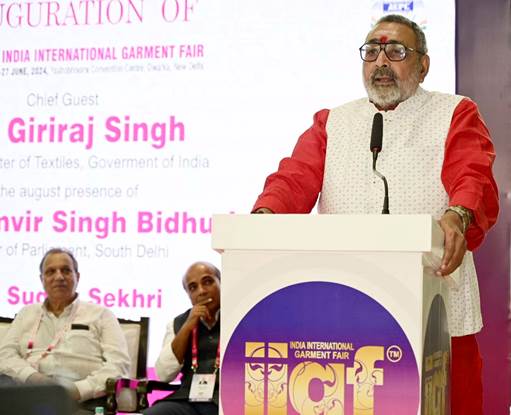FW
DyStar has unveiled Levafix and Remazol reactive dyes that offer the widest possible shades for the terry towel sector. Extremely bright shades can be achieved with Levafix dyes, while Remazol dyes are recommended for economical and cost-effective recipes.
Both Levafix and Remazol reactive dyes meet the normal wash fastness requirements for terry towels. However, until now, only a limited dyestuff selection has been recommended to fulfill the more stringent fastness requirements like multiple home laundry washes with chlorine and non-chlorine bleaching agents and the fastness to benzoyl peroxide.
DyStar has now also launched a new range, especially for the terry towel sector, known as Remazol TT. Dyeing with the Remazol TT range results in fastness levels meeting requirements of the international brands and retailers. Available in six different colours, Remazol TT is Oeko-Tex Standard 100-compliant and meets all relevant restricted substance lists (RSLs).
The word ‘terry’ comes from the French word ‘tirer’, meaning to pull out, referring to the pile of loops which were pulled out by hand to make absorbent traditional Turkish towels. Terry towel weaving was one of the major industries in Turkey, so the name ‘Turk fabric’ or ‘Turkish towel’ was coined. Terry towels can be dyed by both exhaust and pad application processes for solid colors and stripes and designs by use of colored yarn during the weaving process.
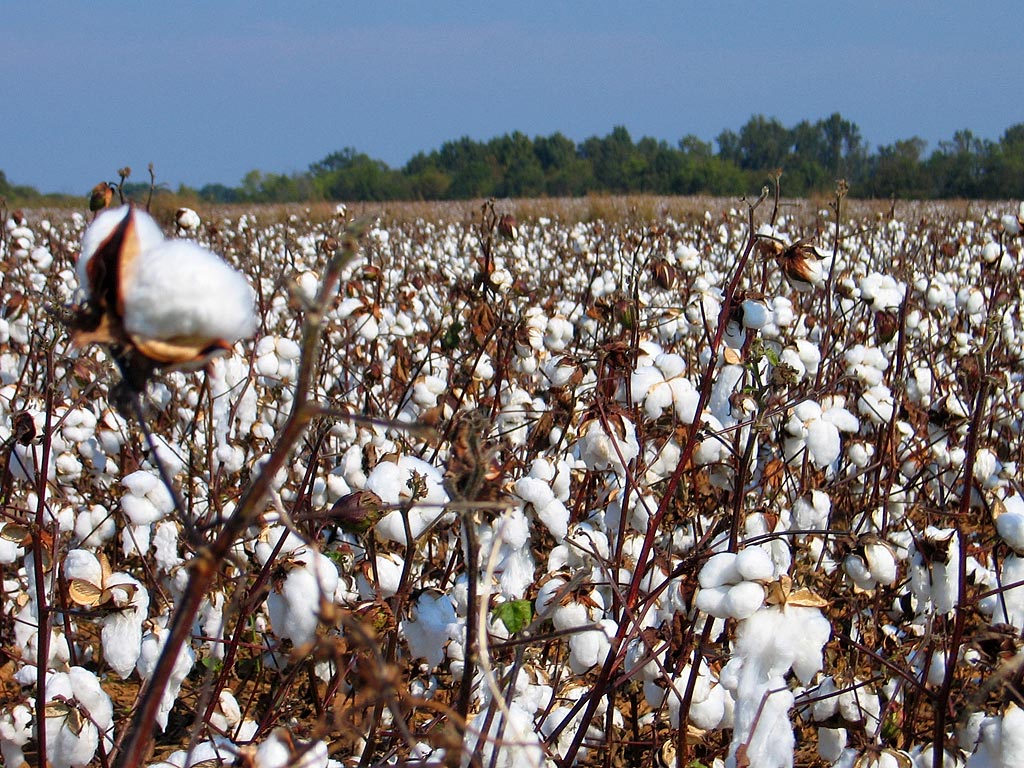 The mood at Intertextile Shanghai Apparel Fabrics-Spring Edition 2014 that took place from March 3 to 5, 2014 was rather low. Reason: the Chinese government’s new cotton policy. As Sanjay Jain, Managing Director, T T Limited explains, “The Chinese currency depreciated by one and a half per cent over the last month. They want the government to reduce state prices. So the mood in China is bearish, for imports. They want to wait and watch.”
The mood at Intertextile Shanghai Apparel Fabrics-Spring Edition 2014 that took place from March 3 to 5, 2014 was rather low. Reason: the Chinese government’s new cotton policy. As Sanjay Jain, Managing Director, T T Limited explains, “The Chinese currency depreciated by one and a half per cent over the last month. They want the government to reduce state prices. So the mood in China is bearish, for imports. They want to wait and watch.”
And as Prem Malik, Chairman, Confederation of Indian Textile Industry said, the mood was subdued even at the yarn expo. Malik said, “The Chinese government is on the verge of changing its cotton policy. They plan to sell their stocks and reduce prices further. The difference between the production cost of India and China will reduce. To that extent, it will impact the cotton yarn business in China.”
Talking about the impact of China’s new cotton policy on India, Ujswal R Lahoti, Vice  Chairman of Texprocil says, “China is sitting on huge stocks. If they liquidate it gradually, there won’t be any effect. Otherwise the market will get a jolt because at the moment India has a major stake in China.”
Chairman of Texprocil says, “China is sitting on huge stocks. If they liquidate it gradually, there won’t be any effect. Otherwise the market will get a jolt because at the moment India has a major stake in China.”
While the global crop of cotton is stable, China’s crop is expected to fall next year but China holds a big stock, so it won’t impact overall supply. Talking about cotton supply in India, Jain says, “People have started having doubts about cotton crop because arrivals have been slow. I feel we will have an all time high production. It’s just that farmers and traders are holding on to stocks in anticipation of higher prices. However, next year will depend on rains.”
On the Indian perspective Malik says, “Overdependence on any one country is not wise. India has always been selling to the entire world. So we need to keep this diversification alive. We should be aggressive in marketing and take away the share of competitors in the yarn business. On cotton quality, service and value based business we have an edge over Pakistan.”
Lahoti pointed out that India had bigger quantity of cotton compared to last year. “We expect exports to be lower than last year. There will be a big surplus. Indian industry should to get some benefit out of it in terms of better prices.”
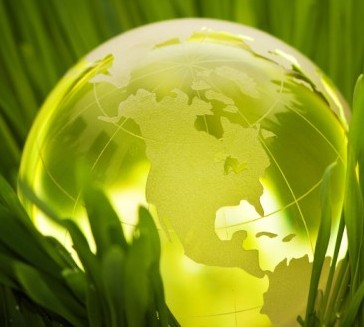 The textile business is witnessing critical times especially for regular products. And this has provoked a change in the industry. Customers all over are looking for change and sustainability is the answer to that change. China too is not far behind and is following the sustainable direction. This has led to an opportunity for environment-friendly products.
The textile business is witnessing critical times especially for regular products. And this has provoked a change in the industry. Customers all over are looking for change and sustainability is the answer to that change. China too is not far behind and is following the sustainable direction. This has led to an opportunity for environment-friendly products.
As Helen Weng, Marketing Specialist-China & HK explains, “Before 2007, we found it difficult to promote the concept of environment protection. Nobody paid attention. But we spent time developing yarns and fibres. We make polymetrics. Some international and even Chinese brands have set up sophisticated systems. For China, this is a more environment-friendly material and they would be happy to listen and ready to pay a bit more than regular products. Chinese consumers are more willing to spend on environment friendly products than US or UK consumers."
Weng says he has seen tremendous success with his business in India. “We have an  office in India. My colleague in India works with downstream textile units and yarn spinners. He also works with some end customers there. Now we are growing in China too. Our process uses less water and generates lower discharges,” adds Weng.
office in India. My colleague in India works with downstream textile units and yarn spinners. He also works with some end customers there. Now we are growing in China too. Our process uses less water and generates lower discharges,” adds Weng.
Sustainability gaining acceptability
Kim Hong-Ki-MD, KTC (Korea Textile Center) says, “From an Italian and European point
of view, we think sustainability is being accepted. Everything should be sustainable though that may not be so yet. It’s something everyone should do. ”
However, there are several challenges sustainability is facing today and investment or finance is one of the major obstacle. “If you have money you can do a lot of things. Indeed, there is a lot of interest at all levels, from big department stores and luxury brands. In Italy for example, Gucci has a fashion agreement with suppliers where they follow the rules governing everything whether it’s a bag or a pair of shoes, a fabric or a garment. The concept is slowly coming up” adds Kim Hong-Ki.
Apparel exports from Bangladesh to the United States have declined significantly. This is closely linked to factory safety issues. Exports from Bangladesh, ranked number three in apparel exports to the US, have dropped by more than 10 per cent.
Though February is historically the slowest month for apparel imports into the US, the decline from Bangladesh is significant. Bangladesh has marked the second month in a row in which the country’s growth has slowed. Last year November was the first time shipments fell since factory safety issues came to the fore with the collapse of the Rana Plaza in April.
The biggest decline in exports to the US was from China, 12 per cent. However, exports from Vietnam, the fastest growing exporter to the US, continued to rise for diversified supply chains. US imports from Bangladesh totaled $5.4 billion dollars in 2013, a 9 per cent increase from 2012, and up 158 per cent from 2003. The five largest import categories in 2013 were: woven apparel, knit apparel, miscellaneous textile products, headgear and fish and seafood.
Germany is coming up with a textile certificate to bring the country's clothing industry within the minimum social and ecological standards. The certificate shall be introduced within this year. Germany's neighbors France and the Netherlands have already enacted such a step.
As it is Germany has several laws in place. All textiles manufactured, imported and sold in Germany must bear a label indicating their raw material composition. Textiles may only be sold if they possess the appropriate specification of the fiber contents, care and washing instructions as well as size in metric measurements.
Even though care labeling symbols are not mandatory in Germany, the National Association for Textile Care Labelling has defined an internationally recognized care labeling system for textiles based on trademark symbols. These care symbols provide traders, consumers and companies with the correct information about taking care of textile products.
Manufacturers and importers of textiles containing potentially dangerous chemicals must register these substances with the European Chemicals Agency and ensure the appropriate communication along the supply chain. The most widely used and recognized certificate of quality for textiles in Germany and the EU is the Oeko-Tex Standard 100. This voluntary certificate provides the textile and clothing industry a uniform standard for consumers who specifically aim to buy textiles that are free of harmful substances. All raw materials, intermediate and end products at all stages of production are tested and certified for compliance with the standard.
Organised for the first time under the PV Manufacturing umbrella, following Première Vision’s acquisition of the show last September, the Made in France exhibition this year saw 99 exhibitors (up 8 per cent from April 2013) and an exhibition area that is almost 15 per cent bigger compared to last year. Première Vision, has introduced a new look to the event, which would now be called Made in France Premiere Vision.
Made in France has also launched its own online magazine in French and English to explore the richness of French high-end manufacturing, its culture, regions, sectors and the people behind the industry – brands, manufacturers and organisations. The magazine will publish two articles a week having profiles, analysis and illustrations highlighting the best examples of Made in France initiatives by the show’s exhibitors and visitors.
Made in France 2014 to be held from April 9 to 10 in Paris is devoted to high-end apparel and accessories manufacturing. The event would be showcasing French high-end manufacturing expertise, skills, craftsmanship and industrial techniques. The 12th edition of Made in France will bring together a handpicked selection of around 100 specialist companies from garment manufacturers to weavers, including those awarded with the French government’s Entreprises du Patrimoine Vivant (‘Living Heritage Company’) quality label for luxury ready-to-wear and accessories.
The exhibition is a platform for fashion designers and heads of collections on the lookout for textiles and fabrics, manufacturing solutions and related services for high-end and luxury apparel and fashion accessories.
www.salonmadeinfrance.com
C&A, currently the largest buyer of organic cotton is going all out to boost the fiber. Demand for organic cotton is exceeding supply but global production of organic cotton has declined. Measured against global production of cotton, the share of organic cotton today is only one per cent. After worldwide production of organic cotton continuously rose in 2011, crop yields subsequently sank by 8 per cent in the following years. The reason: lack of knowledge about organic cultivation methods; poor cooperation between communities.
For C&A Europe, which has been dedicated to promoting organic cotton production for the last 10 years, counteracting this step backwards is a priority. It publishes brochures which explain the added value and current challenges of organic cotton production, and show opportunities for all those in the global supply chain.
C&A sold over 100 million products made from organic cotton in fiscal year 2013. The share of organic cotton against the total cotton collection is 38 per cent. All cotton in C&A products labeled with Bio Cotton is 100 per cent certified organic cotton -- never blended. Nearly 75 per cent of the processed organic cotton, which is cultivated without the use of pesticides and artificial fertilizers, comes from farm projects supported by the C&A Foundation, around 60,000 farmers in India benefit from these projects.
www.c-and-a.com/
The IAF and the OECD will work together on the practical implementation of due diligence principles for the apparel industry, culminating into a conference on the subject in September.
On March 31, the IAF was invited at a ministerial meeting of the Dutch Trade and Development Minister, Lilianne Ploumen, with her French counterpart, Minister Nicole Bricq in Paris. Both ministers called for an international partnership for corporate responsibility. Also present at the meeting was Secretary General Gurria of the OECD. The OECD’s Guidelines for responsible business are central to the international approach envisioned by the Dutch and French ministers.
Through its global responsibility action plan, IAF will work towards creating a harmonized global framework for dealing with labour conditions and sustainability in the apparel industry. Potentially this framework could be the ‘due diligence’ principle, which features centrally in the UN’s Ruggie Guiding Principles and in the OECD’s guidelines.
The seventh Techtextil Russia 2014 took place March 11 to 13, 2014, Moscow. Techtextil Russia is an international trade fair for technical textiles, nonwovens and protective clothing. It brings together technologies for the whole technical textile value chain: raw materials like yarns and fibers, technical textiles and textile technology for every sector of the industry.
This year, 180 companies from 20 countries presented their products, technologies and services to fair visitors. Among the participants were companies from Austria, Belgium, China, Czech Republic, France, Germany, Great Britain, Greece, Italy, Russia, South Korea, Switzerland, Taiwan and Turkey. National and international speakers gave presentations about new chemical protective fabrics, nonwoven materials with a wide range of applications and other materials with specific properties.
Manufacturers from Belgium, China, Czech Republic, France, Germany, Italy and Portugal were present within the national pavilions. The event is not only an exhibition aimed at business, it is also an extensive educational platform which is supported by industry specialists who share their experience, discuss the main challenges and milestones of the field and find proper qualified solutions.
The next Techtextil event in Russia-Techtextil Russia Symposium, will be held from April 16 to 17, 2015 in Moscow.
https://www.messefrankfurt.com/frankfurt/.../techtextil-russia2014.html
ITMA, the European edition of the International Textile Machinery and Garment Exhibition will partner WTiN World Textile Information Network to enforce technological innovation in the technical textiles and nonwovens sectors and become the main sponsor of the Future Material Awards. The awards will be presented at a gala dinner on November 26, 2014, after the 8th Aachen-Dresden International Textile Conference.
WTiN, publisher of international technical textile magazine, Future Materials, launched the awards to recognise success in textile innovation and celebrate the essential work of the many businesses which support the industry.
The ITMA Future Materials Awards are open to all end-use sectors for technical textiles and materials experts, product developers and designers. The awards will comprise of 21 categories, including the best innovations in sportswear, protective textiles, industrial textiles and medical textiles.
There will be also be awards for groundbreaking partnership development, best start-up company and a lifetime achievement award. The jury will consist of renowned industry experts, including Linda Keppinger, Global Materials Director at Nike; Jean-Pierre Haug, Secretary General of Oeko-Tex; Peter Dinsdale, World President of the Textile Institute; Michael Sieber, Research Textile Engineer at the US Army Natick Soldier Systems Centre; Siegfried Winkelbeiner, CEO of Schoeller Textil; Thomas White, Textile Innovation Director at Under Armour, and Lutz Walter, Head of R&D and Innovation of EURATEX.
Entries for the awards are open till July 15, 2014 and the finalists will be announced by mid-September.
www.wtin.com

